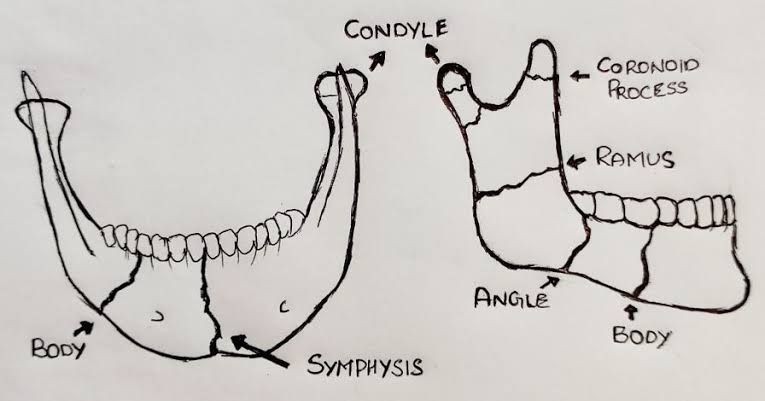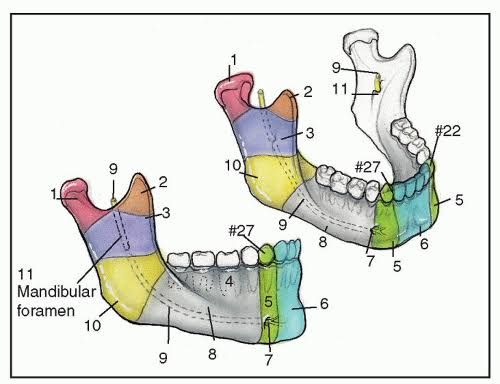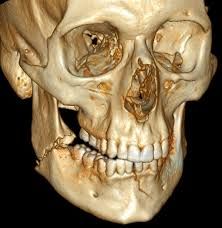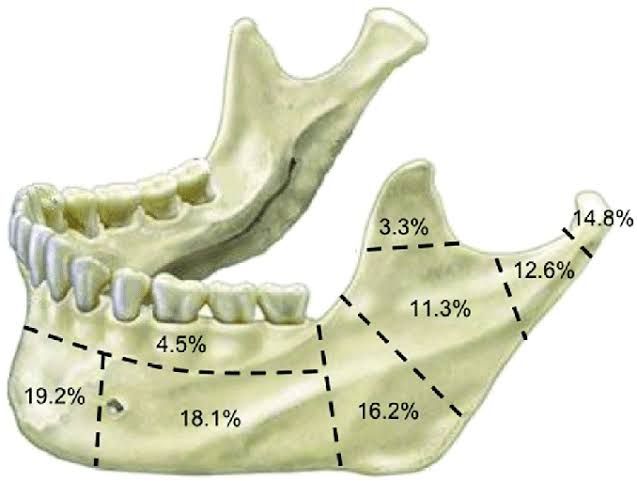This post would be discussing on classification of mandibular fractures. Proper classification and division of fracture sites in the mandible helps in determining and diagnosing the fractures using signs and available symptoms and as well as proper and effective treatment plan to be established and followed upon by a surgeon.
Classification of Mandibular Fractures
There are several classification systems of mandibular fractures available and known to many surgeons but the most widely used classification is the one based on location of fractures which are the fracture sites on the mandibular bone.
Fracture sites and location are better used in classification because both the signs and symptoms together with the treatment are dependent upon the location of the fracture.The mandible is frequently sectionalize into the following zones in order to permit describing the accurate location of a fracture on the whole mandibular bone such as the fracture of the condylar, coronoid process, ramus, angle of mandible, body (molar and premolar areas), parasymphysis and last but not least symphysis.
Alveolar
This type of fracture is associated with the alveolus, also referred to as the alveolar process of the mandible. This is the part of the mandible that carries and houses the teeth and other
Condyles
Condylar fractures are majorly classified by location in comparison to the capsule and encasement of ligaments that houses the temporomandibular joint (intracapsular or extracapsular), dislocation and disengagement. (whether or not the condylar head as the ball has come out of the socket (glenoid fossa) as the muscles (lateral pterygoid) tend to pull the condyle anterior and medial) and neck of the condyle fractures. E.g. extracapsular, non-displaced, condylar neck fracture. Pediatric condylar fractures have special methods for management.
Coronoid
The coronoid process of the mandible lies deep to many structures, including the zygomatic complex (ZMC), this makes very rare to be broken on its own alone in isolation though it may occur in rare occasions.
Isolated cases of the coronoid process fractures should be observed with suspicion with regards to ruling out fracture of the ZMC fracture.
Ramus
Ramus fractures involve a region which is bounded inferiorly by the angle of the extending up to the bifurcation of both the coronoid process and the condylar bone at a junction which that could not be better classified as either condylar or coronoid fractures as it is.
Angle
The angle of the mandible refers to the angle created by the inclination of the body of the mandible and the ramus which holds the coronoid process and the condylar bone.
Angle fractures are defined as those that involve bounded by the anterior aspect of masseter muscle and an oblique line ranging from the lower third molar region to the posteroinferior attachment of the masseter muscle of mastication.
It is usually impounded by greater degree of fracture when it occurs with other parts of the mandible.
Body
Fractures of the mandibular body are defined as those that involve a region bounded anteriorly by a vertical line just distal to the canine tooth that is the parasymphysis and posteriorly in close proximity to the anterior border of the masseter muscle.
Body fractures occurring in between the angle part of the mandible and the parasymphysis area of the mandible. It is one of the most difficult part of the mandible to be treated for fractures due to its location.
Parasymphysis
Parasymphyseal fractures are mandibular fractures that involve a region or spot bounded bilaterally by vertical lines at distal area with reference to the canine tooth or simply fractures occurring very close to the symphysis area of the mandible.
Symphysis
Symphyseal fractures are mostly straight line fractures which can be vertical or horizontal fracture line that run in the midline of the mandible where each of the unilateral mandibular bone meets.(that is, the symphysis).
That's all as regards classification mandibular fractures on this post. Thanks for the usual support and attention given to the post up to this paragraph. Keep blogging and you will reach beyond the sky. More would be discussed further on mandibular fractures in the subsequent posts.
Happy Blogging and Reading
Video from Dr Teeth YouTuber



